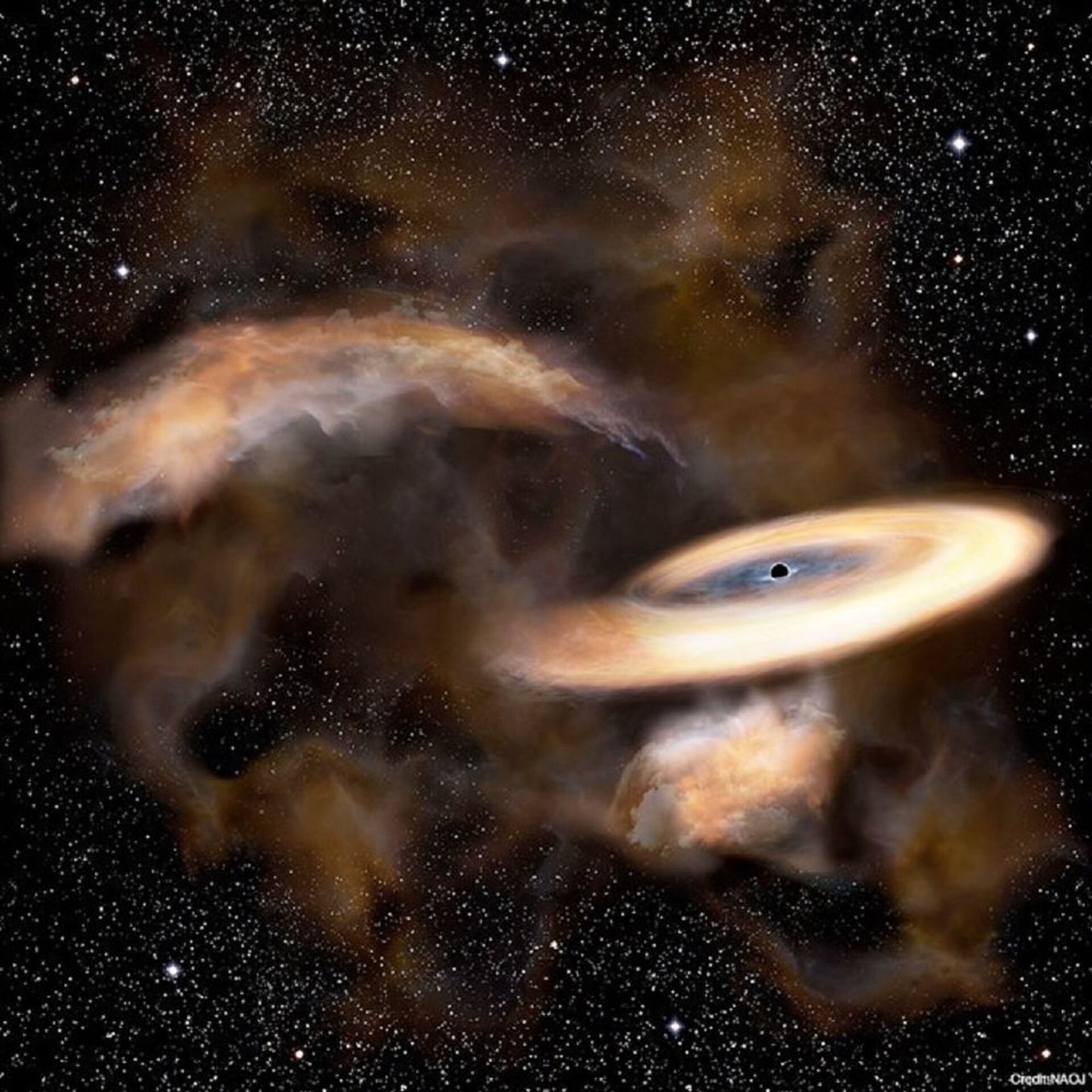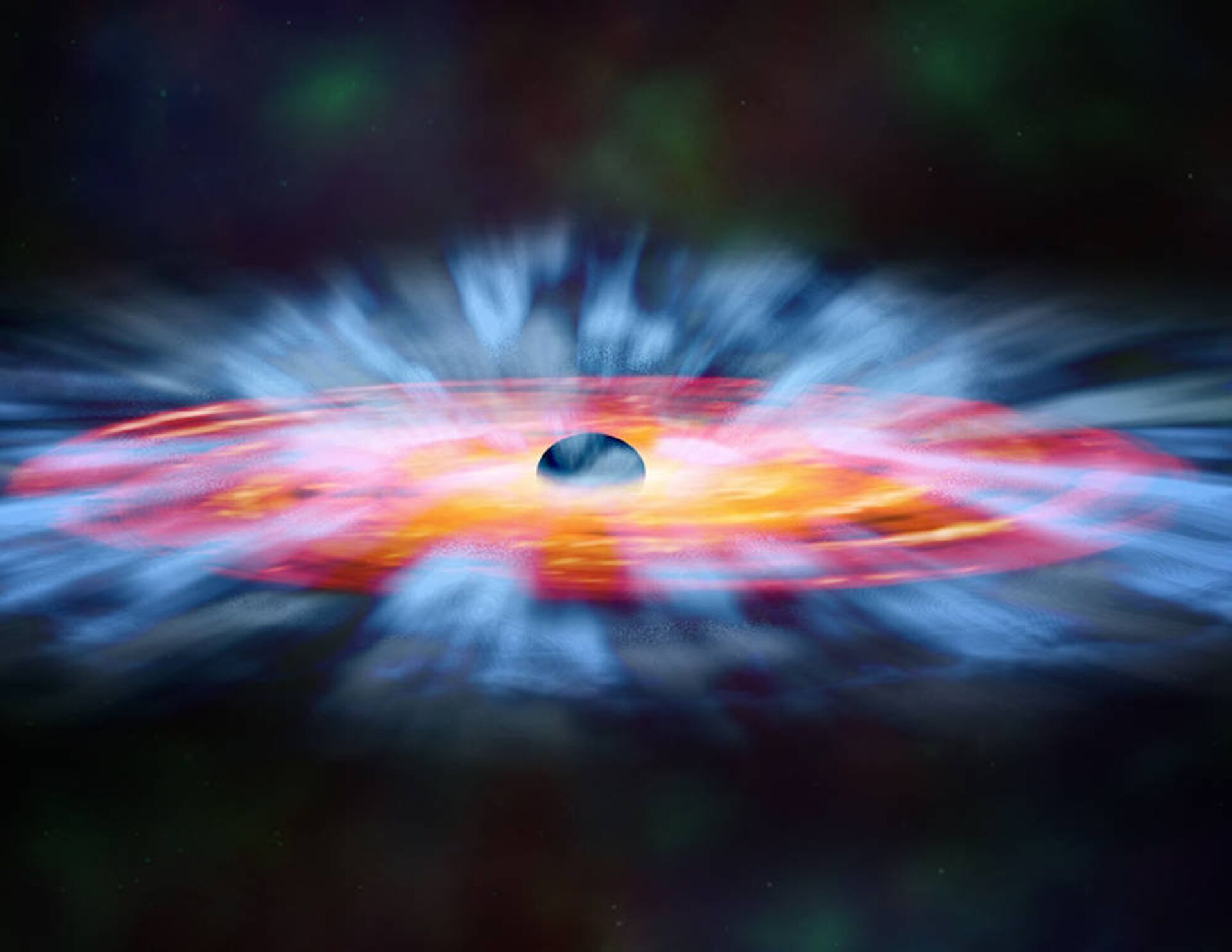https://sputnikglobe.com/20211026/russian-scientists-explain-how-primordial-black-holes-could-have-formed-1090217057.html
Russian Scientists Explain How Primordial Black Holes Could Have Formed
Russian Scientists Explain How Primordial Black Holes Could Have Formed
Sputnik International
Scientists from the National Research Nuclear University MEPhI (NRNU MEPhI) have demonstrated that their proposed model for the formation of primordial black... 26.10.2021, Sputnik International
2021-10-26T11:00+0000
2021-10-26T11:00+0000
2022-08-06T13:32+0000
russia
black hole
black holes
science & tech
https://cdn1.img.sputnikglobe.com/img/104476/90/1044769043_0:0:1041:586_1920x0_80_0_0_beb8758d5477da289be27a0a6d8f9fb3.jpg
Any event accompanied by accelerated mass movement is known to generate gravitational waves, but gravity is a very weak interaction, so the amplitude of these waves is extremely small.The existence of gravitational waves was predicted about a century ago, but due to the extreme weakness of the predicted effects, scientists have long been unable to either confirm or refute their existence.Ultimately, the LIGO and VIRGO collaborations experimentally proved the existence of gravitational waves on 14 September 2015. This discovery was awarded the Nobel Prize in Physics in 2017.Over the past six years, researchers have obtained new signals of gravitational waves passing through the Earth. They have begun to use the findings as a source of information about processes in the early universe based on the time dependence of the amplitude of the received signal, said Sergei Rubin, professor at the Institute of Nuclear Physics and Engineering at the NRNU MEPhI.One such model describes the formation of massive primary black holes as a result of the collapse of closed domain walls characterised by increased energy density. Immediately after birth, such domains make chaotic movements, like a flag in the wind. According to the idea of MEPhI graduate Alexander Sakharov, these domain walls should emit gravitational waves. If their spectrum coincides with that observed on Earth, the model of primary black hole formation proposed by MEPhI scientists will be confirmed.According to Sergei Rubin, this idea turned out to be correct. In a paper published in a highly ranked scientific journal, it was shown that this model of primary black hole formation does not contradict the observed gravitational waves spectrum. Nevertheless, thorough and lengthy testing of the model is necessary.The model is based on current experimental evidence pointing to the existence of so-called primordial black holes, which formed so early that it is difficult to explain their appearance in a standard way. The point is that it takes at least a billion years for a massive black hole to form. The universe was born 13.8 billion years ago, so the oldest black holes must be at least a billion years younger than the "birth of the universe". However, there are black holes that formed 700 million years after the formation of the universe and they are very massive, measured in billions of solar masses.The idea and model of black hole formation as a result of the collapse of closed domain walls was proposed two decades ago by Rubin, Sakharov, and Khlopov. Nevertheless, the NRNU MEPhI group under the scientific leadership of Sergei Rubin continues to develop this model.Unlike many other models of the formation of primordial black holes, the one proposed at MEPhI assumes that black holes form in clusters. Calculations have shown that if there is a probability of jumping over a "hill maximum" in one spatial region, this probability is rather high in neighbouring regions as well.Scientists have a major task to further elaborate the model – to determine the temperature and chemical composition in the region surrounding the closed domain walls, the size of such a region, the number of black holes and their mass. Alexander Sakharov’s idea about the emission of gravitational waves by closed domain walls proved useful.The study results were published in the Physical Review D (PRD) journal.The scientific team claims that they also need to consider the assumption that the formation of such enclosed domain walls is related to the existence of additional spatial dimensions.
Sputnik International
feedback@sputniknews.com
+74956456601
MIA „Rosiya Segodnya“
2021
Sputnik International
feedback@sputniknews.com
+74956456601
MIA „Rosiya Segodnya“
News
en_EN
Sputnik International
feedback@sputniknews.com
+74956456601
MIA „Rosiya Segodnya“
Sputnik International
feedback@sputniknews.com
+74956456601
MIA „Rosiya Segodnya“
black hole, black holes, science & tech
black hole, black holes, science & tech
Russian Scientists Explain How Primordial Black Holes Could Have Formed
11:00 GMT 26.10.2021 (Updated: 13:32 GMT 06.08.2022) Scientists from the National Research Nuclear University MEPhI (NRNU MEPhI) have demonstrated that their proposed model for the formation of primordial black holes in the form of clusters does not contradict new observations of gravitational waves.
Any event accompanied by accelerated mass movement is known to generate gravitational waves, but gravity is a very weak interaction, so the amplitude of these waves is extremely small.
The existence of gravitational waves was predicted about a century ago, but due to the extreme weakness of the predicted effects, scientists have long been unable to either confirm or refute their existence.
Ultimately, the LIGO and VIRGO collaborations experimentally proved the existence of gravitational waves on 14 September 2015. This discovery was awarded the Nobel Prize in Physics in 2017.
Over the past six years, researchers have obtained new signals of gravitational waves passing through the Earth. They have begun to use the findings as a source of information about processes in the early universe based on the time dependence of the amplitude of the received signal, said Sergei Rubin, professor at the Institute of Nuclear Physics and Engineering at the NRNU MEPhI.
"Scientists now have an additional tool to study the universe, along with cosmic rays, neutrinos and electromagnetic radiation in a wide wavelength range. Very quickly, scientists began to use this tool to confirm or refute models describing different stages in the life of the universe", he said.
One such model describes the formation of massive
primary black holes as a result of the collapse of closed domain walls characterised by increased energy density. Immediately after birth, such domains make chaotic movements, like a flag in the wind. According to the idea of MEPhI graduate Alexander Sakharov, these domain walls should emit gravitational waves. If their spectrum coincides with that observed on Earth, the model of primary black hole formation proposed by MEPhI scientists will be confirmed.
According to Sergei Rubin, this idea turned out to be correct. In a paper published in a highly ranked scientific journal, it was shown that this model of primary black hole formation does not contradict the observed gravitational waves spectrum. Nevertheless, thorough and lengthy testing of the model is necessary.
The model is based on current experimental evidence pointing to the existence of so-called primordial black holes, which formed so early that it is difficult to explain their appearance in a standard way.
The point is that it takes at least a billion years for a massive black hole to form. The universe was born 13.8 billion years ago, so the oldest black holes must be at least a billion years younger than the "birth of the universe". However, there are black holes that formed 700 million years after the formation of the universe and they are very massive, measured in billions of solar masses.
The idea and model of
black hole formation as a result of the collapse of closed domain walls was proposed two decades ago by Rubin, Sakharov, and Khlopov. Nevertheless, the NRNU MEPhI group under the scientific leadership of Sergei Rubin continues to develop this model.
"Let's imagine that the universe is filled with a hypothetical field. Its potential energy (potential) depends on the magnitude of that field. No one knows the shape of this potential. However, if we assume that it has two minima, it may turn out that due to fluctuations of the early expanding Universe in some part of space, the field will jump over the ‘hill maximum’ and roll to a minimum. As we know, all energy goes to a minimum in the presence of friction. That is the main space tends to one minimum, and in a small region, it tends to another. And this small area is surrounded by a closed domain wall, which can collapse into a black hole", Sergei Rubin commented.
Unlike many other models of the formation of primordial black holes, the one proposed at MEPhI assumes that black holes form in clusters. Calculations have shown that if there is a probability of jumping over a "hill maximum" in one spatial region, this probability is rather high in neighbouring regions as well.
"The most interesting thing is what happens to these clusters afterwards. Clearly, the region that went over the maximum first will have the largest mass. We do not know exactly what the mass distribution of black holes will be. This and the subsequent dynamics depend on the model parameters and initial conditions. Once the primordial black holes have formed, they start interacting with each other, colliding, merging. Moreover, those black holes, which were on the periphery, begin to be captured by the general expansion of space and fly away from the cluster forever. That is, the clusters begin to live their own inner life, boiling in the 'soup' of the early universe", Sergei Rubin explained.
Scientists have a major task to further elaborate the model – to determine the temperature and chemical composition in the region surrounding the closed domain walls, the size of such a region, the number of black holes and their mass. Alexander Sakharov’s idea about the emission of gravitational waves by closed domain walls proved useful.
The study results were published in the
Physical Review D (PRD) journal.The scientific team claims that they also need to consider the assumption that the formation of such enclosed domain walls is related to the existence of additional spatial dimensions.






